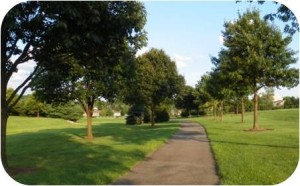 So, how can we calculate an estimate of the annual economic and environmental benefits provided by individual trees in our back yards, parks, or along the streets? We can use the National Tree Benefit Calculator developed by Casey Trees and Davey Tree Expert Company.
So, how can we calculate an estimate of the annual economic and environmental benefits provided by individual trees in our back yards, parks, or along the streets? We can use the National Tree Benefit Calculator developed by Casey Trees and Davey Tree Expert Company.
The tree benefit calculator is based on the STREETS application that runs within the i-Tree urban forest analysis program developed and released by the USDA Forest Service in 2006. This tool was designed to be easy to use – you only need to enter the following 4 variables: location (zip code), tree species, tree diameter, and land use/housing type. That’s it!
Let’s run through an example. First, click on this link: National Tree Benefit Calculator
1. The zip code should already be set for 18017, Bethlehem. If not, change the zip code.
2. Choose a tree species – scroll down and select Northern Red Oak
3. Next, enter the tree’s diameter – 20 inches.
Foresters typically measure diameter at 4.5 feet above the ground and is referred to as dbh (diameter at breast height). You can also simply measure the circumference and divide by 3.14 (Pi) to get the diameter.
4. Finally, select land-use type – Single Family Residential.
Calculate
According to the tree benefit calculator, our 20-inch northern red oak (Quercus rubra) provides the following annual benefits:
- Overall Benefits = $202 per year. Keep in mind that these benefits will increase as the tree grows. However, in order to maximize these benefits every year, our trees must be properly maintained and kept healthy.
- Stormwater Runoff = $22.75 for 2,844 gallons intercepted
- Property Value Increase = $60.19 for 100 square feet of leaf surface area (LSA)
- Energy Conservation = $21.01 for conserving 150 Kilowatt hours of electricity for cooling and $77.17 for reducing oil or natural gas consumption by 55 therms
- Air Quality benefits = $18.44
- CO2 Reduction = $2.42 for sequestering 784 pounds of atmospheric CO2
We’ve just learned that one healthy 20-inch diameter red oak provides us with tangible benefits. Try using this model to estimate the collective value of all the trees on your property – you may be surprised at the results. Remember, it’s difficult to calculate a dollar value for all the other aesthetic, social, or ecological benefits, including reduced fear and aggressive behavior, increased job satisfaction, community pride, privacy, and wildlife habitat.
